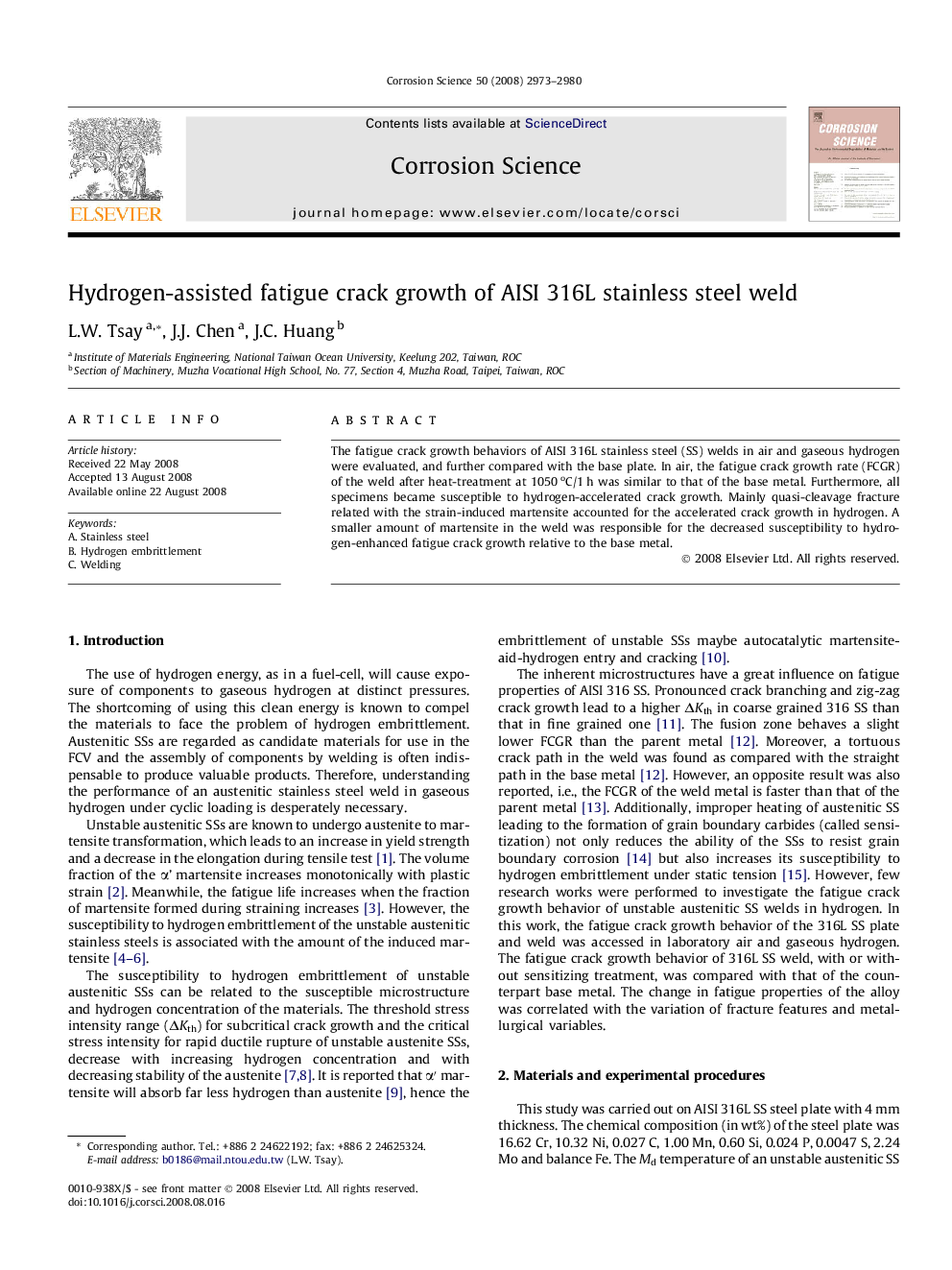| Article ID | Journal | Published Year | Pages | File Type |
|---|---|---|---|---|
| 1471428 | Corrosion Science | 2008 | 8 Pages |
Abstract
The fatigue crack growth behaviors of AISI 316L stainless steel (SS) welds in air and gaseous hydrogen were evaluated, and further compared with the base plate. In air, the fatigue crack growth rate (FCGR) of the weld after heat-treatment at 1050 oC/1 h was similar to that of the base metal. Furthermore, all specimens became susceptible to hydrogen-accelerated crack growth. Mainly quasi-cleavage fracture related with the strain-induced martensite accounted for the accelerated crack growth in hydrogen. A smaller amount of martensite in the weld was responsible for the decreased susceptibility to hydrogen-enhanced fatigue crack growth relative to the base metal.
Related Topics
Physical Sciences and Engineering
Materials Science
Ceramics and Composites
Authors
L.W. Tsay, J.J. Chen, J.C. Huang,
